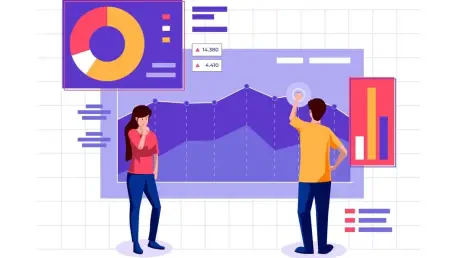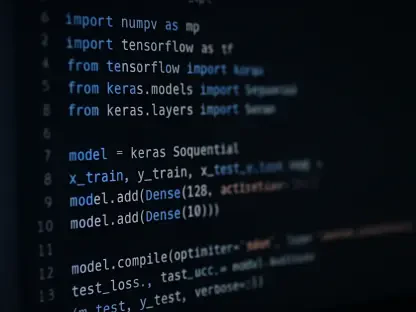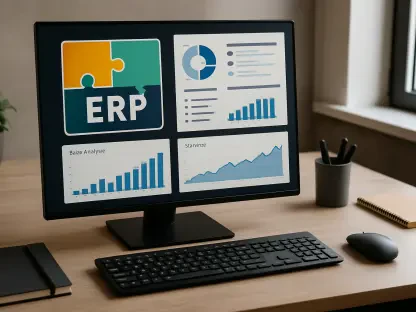Imagine a world where the overwhelming complexity of raw scientific data no longer hinders groundbreaking discoveries, where researchers from diverse fields can transform intricate datasets into clear, interactive insights without ever touching a line of code. This is not a distant dream but a reality shaped by an innovative tool emerging from the Institute for Artificial Intelligence in Medicine (IKIM) at the University of Duisburg-Essen in Germany. Developed to tackle the pervasive challenge of data overload in research, this open-source solution empowers scientists to communicate findings with unprecedented clarity and ease. This review dives deep into how this technology is reshaping the landscape of data visualization, making it accessible to all.
Core Features That Set It Apart
Browser-Based Interactivity for Seamless Sharing
One of the standout capabilities of this tool is its ability to generate fully interactive HTML reports that can be viewed directly in any web browser. This feature eliminates the need for specialized software, allowing researchers to share their findings effortlessly via email or as manuscript attachments. The significance of this cannot be overstated—whether collaborating across continents or presenting at a conference, the data remains dynamic and engaging for all viewers.
What’s more impressive is the tool’s robust performance with massive datasets. Handling millions of rows without compromising speed or functionality, it ensures that even the most data-heavy projects in fields like genomics or epidemiology are presented with clarity. This scalability addresses a critical pain point in scientific research, where large datasets often become unwieldy and inaccessible to non-technical stakeholders.
User-Friendly Design for All Skill Levels
Another defining aspect is the simplicity of its configuration process. By using straightforward text files—akin to a customizable profile—users can define how their data is displayed without needing any programming expertise. This democratizes data visualization, breaking down barriers that have long excluded many researchers from leveraging advanced tools.
This accessibility extends to a wide range of users, from seasoned data scientists to educators and students with minimal technical backgrounds. The intuitive setup means that time previously spent grappling with complex software can now be redirected toward analysis and interpretation, fostering a more inclusive research environment.
Performance in Real-World Scenarios
The versatility of this tool shines through in its application across diverse scientific domains. In medical research, for instance, it has been instrumental in presenting patient-specific genetic findings and therapy options in interactive formats for molecular tumor boards. This allows clinicians to explore data dynamically, improving decision-making processes in critical care settings.
Beyond healthcare, its impact is evident in fields like archaeology, where it organizes and links detailed information on artifacts such as decorated clothing elements from multiple excavation sites. This ability to handle interconnected data points enhances the understanding of historical patterns and cultural connections, proving its adaptability to varied research needs.
Additionally, its suitability for teaching and evaluation purposes underscores its broad utility. By making data-driven results flexible and sustainable, it supports educational initiatives and peer reviews, ensuring that insights are not only accessible but also actionable across nearly every discipline.
Alignment with Emerging Trends in Data Visualization
The growing demand for user-friendly data visualization tools in scientific research is a trend that cannot be ignored, driven by the need to present complex information in an intuitive manner. This tool aligns perfectly with this shift, prioritizing ease of use and minimal maintenance, as emphasized by developers at IKIM under the leadership of Prof. Dr. Johannes Köster. Its design reflects a deep understanding of the challenges researchers face in communicating data effectively.
Further enhancing its reach is a comprehensive tutorial that guides users through its functionalities, catering to a diverse audience regardless of technical expertise. This focus on inclusivity supports the broader movement toward accessible research technologies, ensuring that data visualization is no longer the domain of a select few but a tool for all.
By enabling the exploration of complex relationships and hierarchies across multiple tables, it also addresses the need for deeper data insights. Researchers can navigate linked entries with ease, uncovering patterns that might remain hidden in static reports, thus pushing the boundaries of how data is interpreted and shared in academic circles.
Challenges Hindering Widespread Adoption
Despite its strengths, certain obstacles persist in integrating this technology into everyday research workflows. The complexity of raw data tables remains a significant hurdle, often requiring a shift in how researchers approach data presentation compared to traditional, less interactive methods. This transition can be daunting for those accustomed to familiar tools, even if they are less efficient.
Another barrier lies in user adaptation and the integration of this solution into existing systems. While its design is intuitive, some institutions may face logistical challenges in training staff or aligning it with current protocols. Resistance to change, a common issue in tech adoption, could slow its uptake in more conservative research environments.
Ongoing development efforts at IKIM aim to address these limitations, with a focus on refining features to enhance usability and compatibility. As these improvements roll out over the coming years, from 2025 onward, the expectation is that technical and practical barriers will diminish, paving the way for broader acceptance across scientific communities.
Future Potential in Shaping Data Communication
Looking ahead, the potential evolution of this tool includes support for even more intricate data relationships and hierarchies, catering to the growing complexity of research datasets. Enhancements in this area could position it as a cornerstone for advanced analytical projects, further solidifying its role in scientific discovery.
Its influence may also extend beyond its immediate applications, setting a precedent for future innovations in accessible research tools. By demonstrating that powerful technology can be both user-friendly and impactful, it could inspire similar solutions in data communication, fostering a new wave of tools designed with inclusivity in mind.
The long-term impact on scientific collaboration is equally promising. As barriers to data analysis continue to fall, the democratization of such technologies could lead to more interdisciplinary partnerships, accelerating discoveries and ensuring that complex information becomes a catalyst for progress rather than an obstacle.
Final Thoughts and Next Steps
Reflecting on this evaluation, the transformative power of this technology in bridging the gap between cumbersome raw data and actionable insights stands out as its greatest achievement. Its user-friendly design, capacity to handle massive datasets, and browser-based interactivity prove to be game-changers in how scientific information is accessed and shared.
Moving forward, the focus should be on expanding training programs to ease user adaptation, ensuring that researchers across all fields can harness its capabilities without hesitation. Collaborations between developers and academic institutions could further streamline integration into existing workflows, addressing logistical challenges head-on.
Ultimately, the journey of this tool highlights a critical need for continued investment in accessible data solutions. Stakeholders are encouraged to advocate for policies and funding that support the development of similar technologies, guaranteeing that the future of research remains inclusive, collaborative, and driven by clear, communicable insights.









